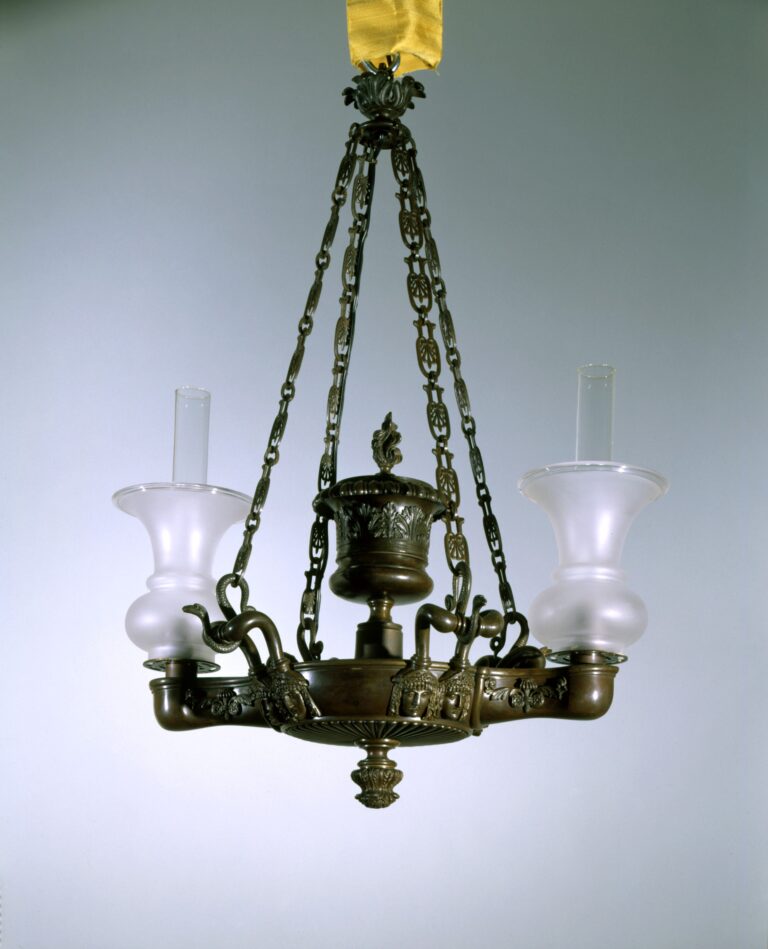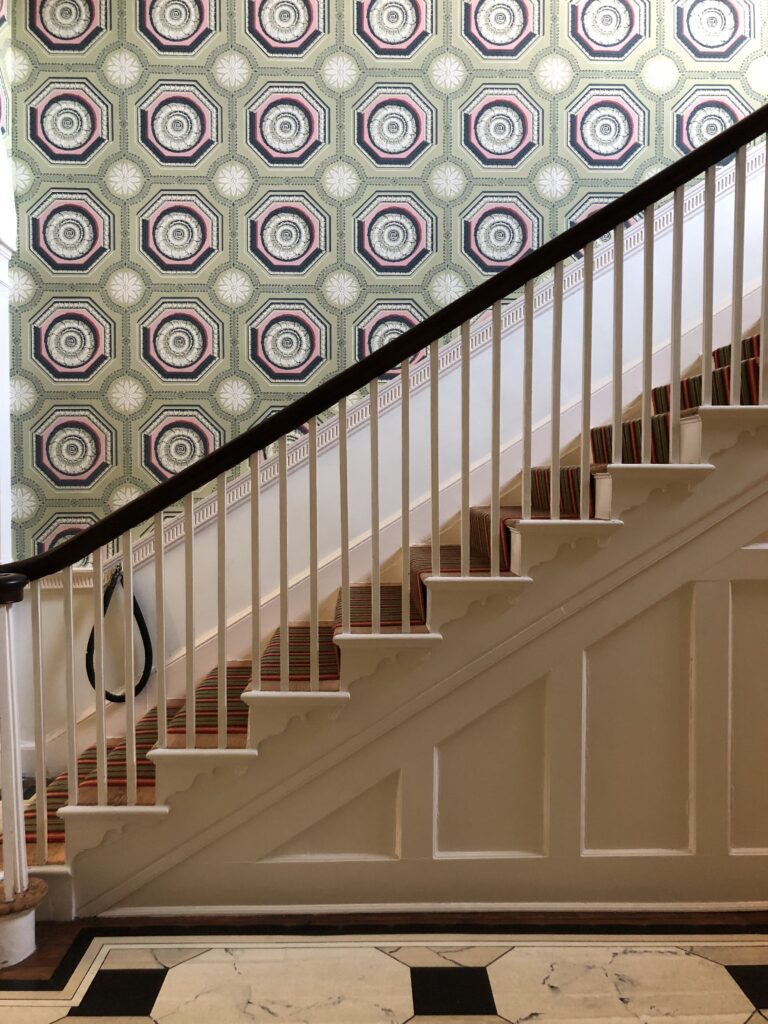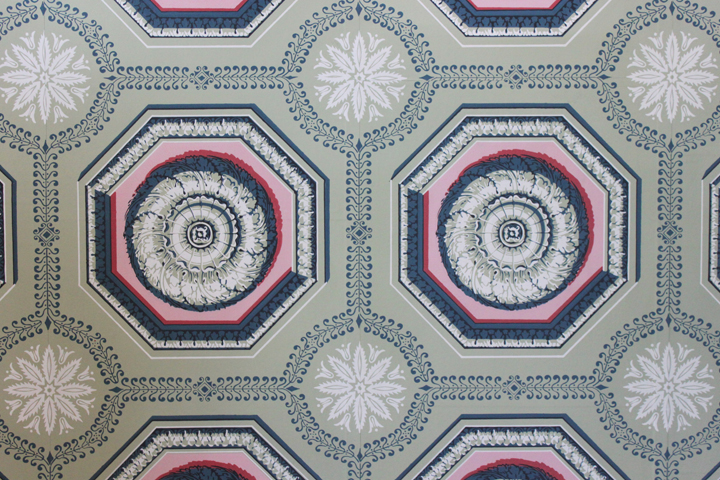The Lower Passage

The Lower Passage was the first space visitors saw when they visited Dumbarton House. What does this room tell you about its past occupants?
The house was constructed in 1799 and reflects a sense of nationalism and neoclassicalism, typical of Federal period homes. The neoclassical influence, which drew inspiration from ancient Greece and Rome, can be seen in the sidelights framing the door, the arch dividing the central passage and the large Palladian window on the landing. This room was outfitted with fashionable furnishings, including an Egyptian lamp, floorcloth, and green Windsor chairs. The passage also creates a separation between the family’s private rooms and those where past occupants hosted their guests.


In March 1784, Joseph Nourse recorded in his account book the purchase of “a dozen Windsor Chairs” from an unknown Philadelphia joiner, for which he paid £8.10.0. The commission included ten side chairs and two arm chairs. Windsor chairs were the most common form of seating furniture and were typically used to line the passage of a house to accommodate visiting guests or for servant seating. Microscopic analysis of one of Nourse’s original chairs revealed that it was originally copper-green (verdigris) in color, a popular finish in late-18th century.
Today, the central passage at Dumbarton House features reproduction Windsor chairs that are color matched to Nourse’s originals.
An argand chandelier hangs near the front of the Central Passage and lights the entryway. In October 1804, Joseph Nourse recorded in his account ledger the purchase of an “Egyptian Lamp” for ten dollars. This chandelier is likely similar to the one purchased by Nourse. This two-light Argand chandelier was made in England at the height of the Regency period. The asps and the classical masks decorate the surface.
This feature of the Central Passage had both and aesthetic and practical purpose. Argand lamps were one of the many lighting innovations that arose during the Neoclassical period. Using new techniques for air flow, these oil lamps produced twelve times the light of an average candle, allowing spaces like this one to be used more freely even when it was dark outside.
Wallpaper

In Joseph Nourse’s account ledger from October 1, 1804, he records that he paid $52.12 for wallpaper to Thomas Hurley, a paperstainer and paperhanger in Philadelphia. Although the pattern or type of wallpaper that was used throughout Dumbarton House is unknown, an earlier letter from Joseph to his wife Maria about renovating their Philadelphia townhome in 1796, suggests using wallpaper on the back parlor “with a gloss in the ground which will make it more light and wear cleaner – the passage of a fashionable Octagon figure which looks plain & elegant….” (citation: Joseph Nourse to Maria Louisa Bull Nourse, September 13, 1796; Nourse Family Papers, UVA-Alderman Library; #3490-1, Box 1, Folder dates 1796-1799, and heading, Correspondence of Joseph Nourse). With this in mind, Dumbarton House commissioned Adelphi Paper Hangings to produce an octagonal print that is similar to one found in the collection at the Cooper-Hewitt.






